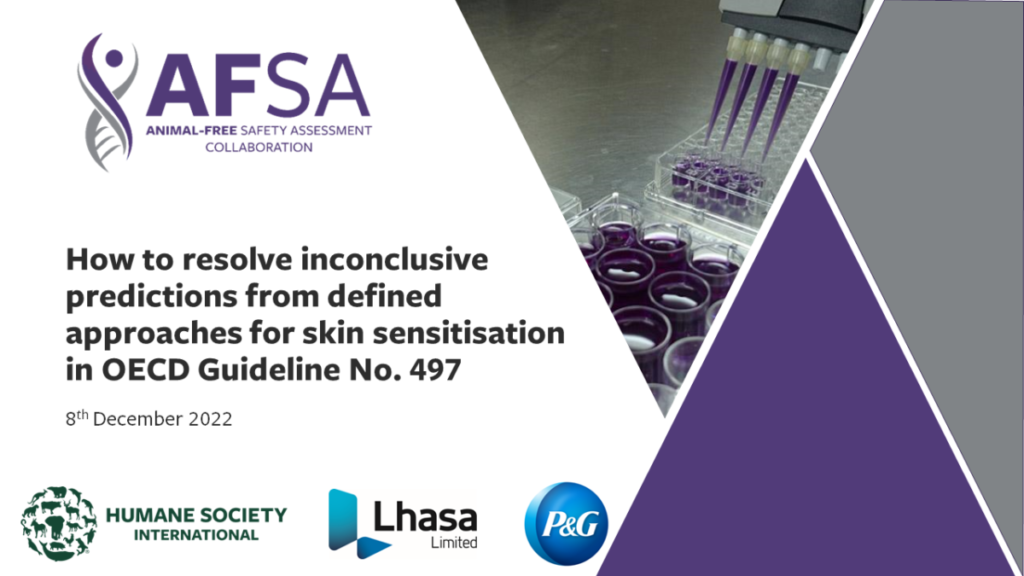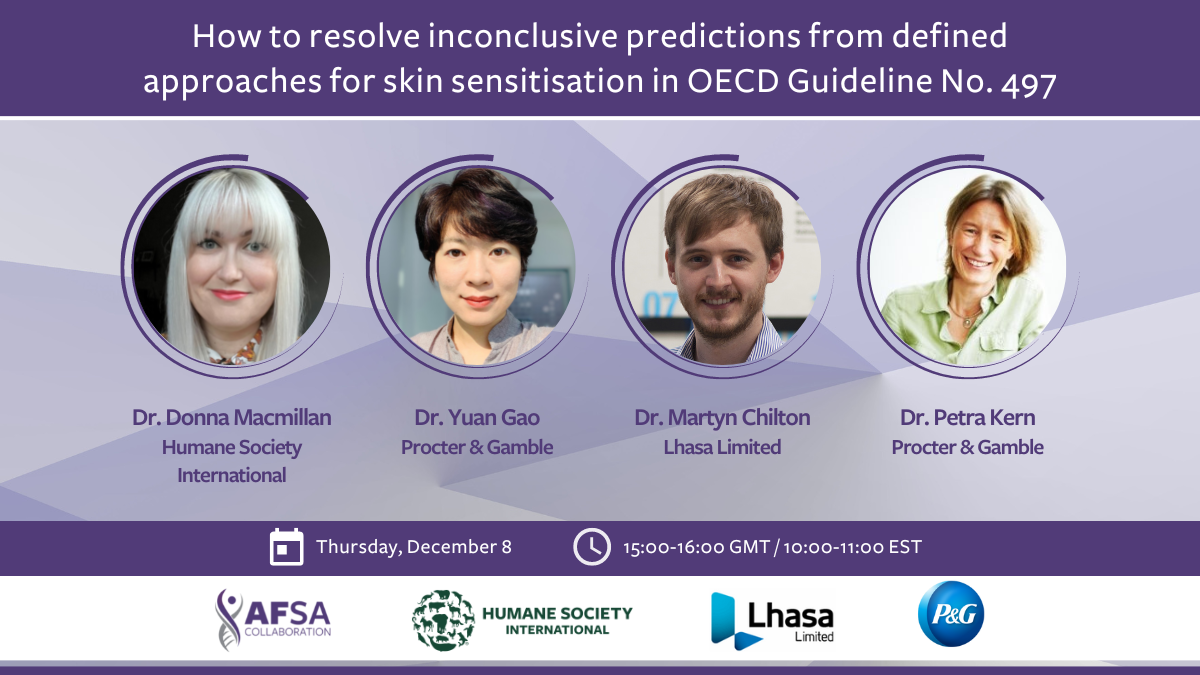In June 2021 the Organisation for Economic Co-operation and Development published Guideline No. 497 on Defined Approaches for Skin Sensitisation (DASS GL). Within this, two DAs are described, known as the 2o3 and the ITS, using combinations of in chemico/in vitro assays and in silico predictions (for ITS only).
As limitations of the individual information sources are carried through to the DAs, inconclusive predictions are possible for chemicals with results in the borderline range, and chemicals with out of domain results. However, these inconclusive predictions can be resolved by applying a weight of evidence approach as described in our publication – How to resolve inconclusive predictions from defined approaches for skin sensitisation in OECD Guideline No. 497, Regulatory Toxicology and Pharmacology, Volume 135, 2022, 105248.
Join us for a webinar which describes GL 497 and presents several case studies, each ‘inconclusive’ for skin sensitisation potential according to both DAs. By applying a weight of evidence approach using additional lines of evidence, a conclusive prediction, where possible, is achieved.
Presenters:
Dr. Donna Macmillan, Humane Society International
Introductory and concluding remarks
Background of GL 497
Dr. Yuan Gao, Procter & Gamble
Case study 1
Dr. Martyn Chilton, Lhasa Limited
Case study 2
Dr. Petra Kern, Procter & Gamble
Case study 3
FEEDBACK SURVEY We would appreciate your input on what we’ve presented via this webinar. Please take our short feedback survey: https://forms.office.com/r/040ChtEBPX

